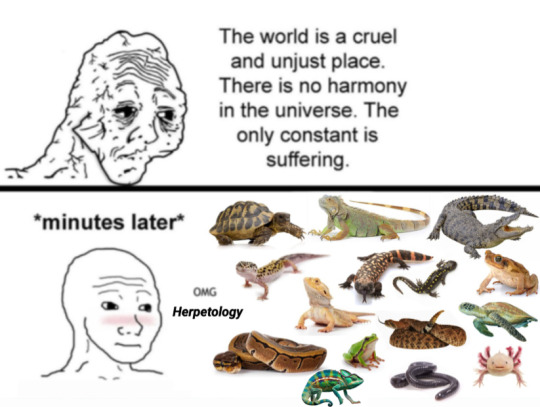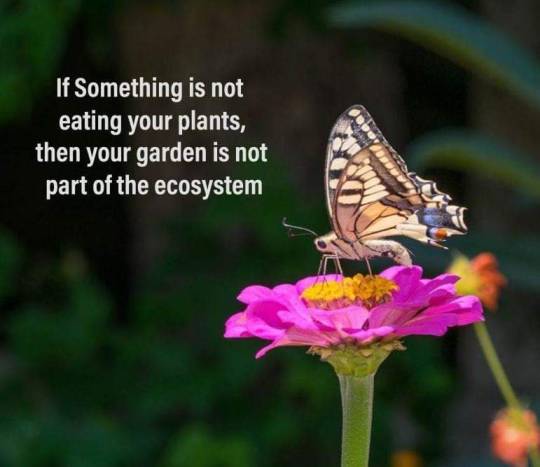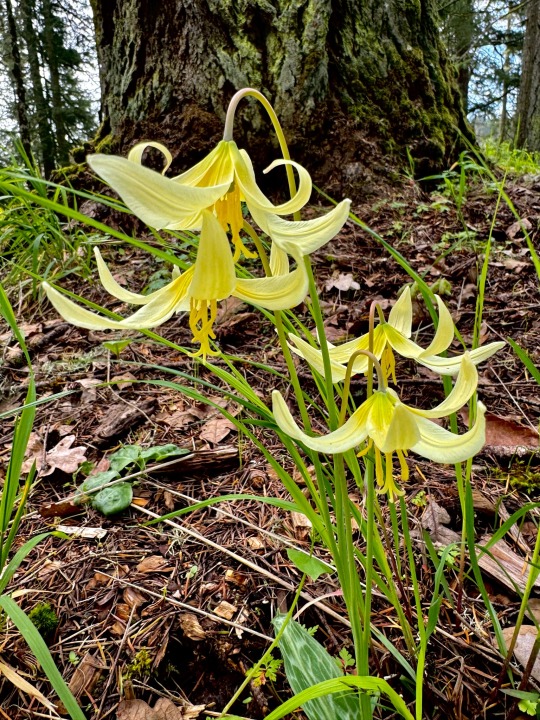Text
When pioneer species are replaced by more specialised plants through the process of succession you might assume that they are enemies, with the latter driving out the former. However when you understand that the layer of soil formed by decomposing pioneers is what facilities the growth of other plants, you realise that they are actually kissing each other with tongue
139 notes
·
View notes
Text


Since some people have asked me, if you're looking to pollinate your local pawpaws right now for future autumnal enjoyment, here's Cothron's guide. Depending on where you are, this needs to happen asap or within the next week or so.
96 notes
·
View notes
Text



shoutout to this random-ass guy who had this incredibly rare bird sighting
5K notes
·
View notes
Text









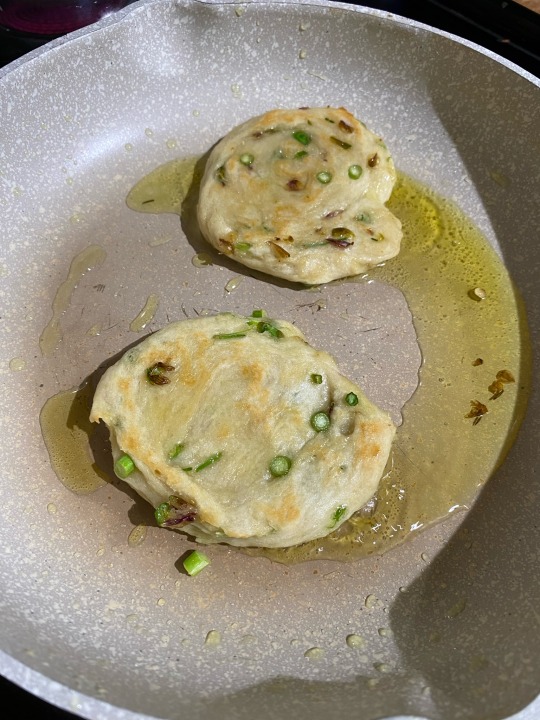
Sweet and savory spring pancakes with Allium oleraceum and candied spiderwort flowers.
I’ll include the recipe when I do my write up for @graveyarddirt ‘s hagging out.
39 notes
·
View notes
Text
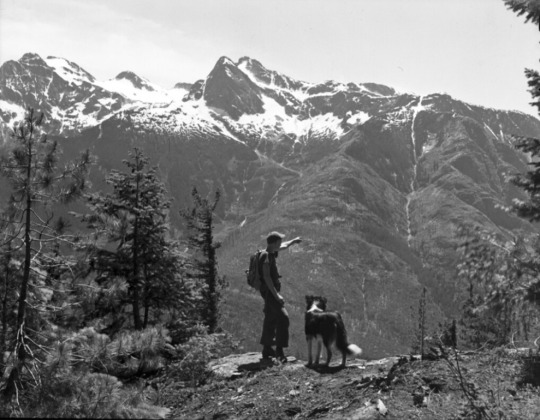
A young man and his dog take in the view of Colonial Peak and Pyramid Peak from Sourdough Mountain.
Washington
1940
995 notes
·
View notes
Note
Hey, would you be willing to elaborate on that "disappearance of the Anasazi is bs" thing? I've heard something like that before but don't know much about it and would be interested to learn more. Or just like point me to a paper or yt video or something if you don't want to explain right now? Thanks!
I’m traveling to an archaeology conference right now, so this sounds like a great way to spend my airport time! @aurpiment you were wondering too—
“Anasazi” is an archaeological name given to the ancestral Puebloan cultural group in the US Southwest. It’s a Diné (Navajo) term and Modern Pueblos don’t like it and find it othering, so current archaeological best practices is to call this cultural group Ancestral Puebloans. (This is politically complicated because the Diné and Apache nations and groups still prefer “Anasazi” because through cultural interaction, mixing, and migration they also have ancestry among those people and they object to their ancestry being linguistically excluded… demonyms! Politically fraught always!)
However. The difficulties of explaining how descendant communities want to call this group kind of immediately shows: there are descendant communities. The “Anasazi” are Ancestral Purbloans. They are the ancestors of the modern Pueblos.
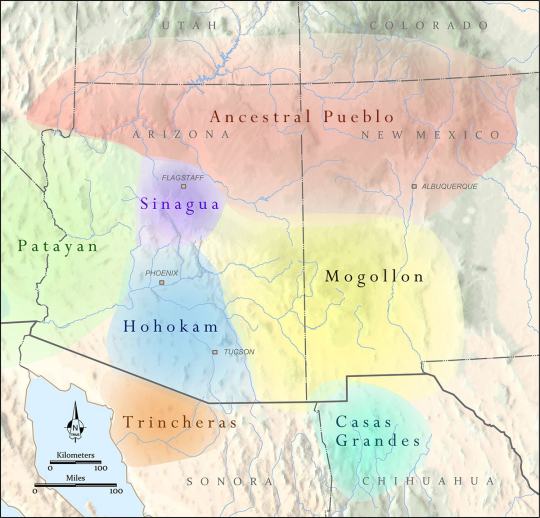
The Ancestral Puebloans as a distinct cultural group defined by similar material culture aspects arose 1200-500 BCE, depending on what you consider core cultural traits, and we generally stop talking about “Ancestral Puebloan” around 1450 CE. These were a group of people who lived in northern Arizona and New Mexico, and southern Colorado and Utah—the “Four Corners” region. There were of course different Ancestral Pueblo groups, political organizations, and cultures over the centuries—Chaco Canyon, Mesa Verde, Kayenta, Tusayan, Ancestral Hopi—but they generally share some traits like religious sodality worship in subterranean circular kivas, residence in square adobe roomblocks around central plazas, maize farming practices, and styles of coil-and-scrape constructed black-on-white and black-on-red pottery.
The most famous Ancestral Pueblo/“Anasazi” sites are the Cliff Palace and associated cliff dwellings of Mesa Verde in southwestern Colorado:

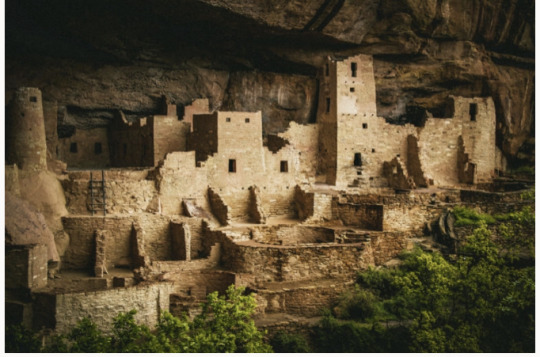
When Europeans/Euro-Americans first found these majestic places, people had not been living in them for centuries. It was a big mystery to them—where did the people who built these cliff cities go? SURELY they were too complex and dramatic to have been built by the Native people who currently lived along the Rio Grande and cited these places as the homes of their ancestors!
So. Like so much else in American history: this mystery is like, 75% racism.
But WHY did the people of Mesa Verde all suddenly leave en masse in the late 1200s, depopulating the whole Mesa Verde region and moving south? That was a mystery. But now—between tree-ring climatological studies, extensive archaeology in this region, and actually listening to Pueblo people’s historical narratives—a lot of it is pretty well-understood. Anything archaeological is inherently, somewhat mysterious, because we have to make our best interpretations of often-scant remaining data, but it’s not some Big Mystery. There was a drought, and people moved south to settle along rivers.
There’s more to it than that—the 21-year drought from 1275-1296 went on unusually long, but it also came at a time when the attempted re-establishment of Chaco cultural organization at the confusingly-and-also-racist-assuption-ly-named Aztec Ruin in northern New Mexico was on the decline anyway, and the political situation of Mesa Verde caused instability and conflict with the extra drought pressures, and archaeologists still strenuously debate whether Athabaskans (ancestors of the Navajo and Apache) moved into the Four Corners region in this time or later, and whether that caused any push-out pressures…
But when I tell people I study Southwest archaeology, I still often hear, “Oh, isn’t it still a big mystery, what happened to the Anasazi? Didn’t they disappear?”
And the answer is. They didn’t disappear. Their descendants simply now live at Hopi, Zuni, Taos, Picuris, Acoma, Cochiti, Isleta, Jemez, Laguna, Nambé, Ohkay Owingeh, Pojoaque, Sandia, San Felipe, Santa Clara, San Ildefonso, Tamaya/Santa Ana, Kewa/Santo Domingo, Tesuque, Zia, and Ysleta del Sur. And/or married into Navajo and Apache groups. The Anasazi/Ancestral Puebloans didn’t disappear any more than you can say the Ancient Romans disappeared because the Coliseum is a ruin that’s not used anymore. And honestly, for the majority of archaeological mysteries about “disappearance,” this is the answer—the socio-political organization changed to something less obvious in the archaeological record, but the people didn’t disappear, they’re still there.
343 notes
·
View notes
Text

catch me later..
camas and sea thrift down by the river
361 notes
·
View notes
Text
Millions of Birds Now Migrating Safely Through Darkened Texas Cities After Successful Lights Out Campaign https://www.goodnewsnetwork.org/millions-of-birds-now-migrating-safely-through-darkened-texas-cities-after-successful-lights-out-campaign/
697 notes
·
View notes
Text
"There are many different kinds of animals that we call natural enemies, all of which hunt the bugs that might harm your plants. Many might already be familiar faces, such as lady beetles, spiders, lacewings, and dragonflies. These hunters catch their prey by chasing it down or waiting in ambush."
40 notes
·
View notes
Text
having a favorite native annual plant is so awesome. every time i go outside lately i see one of my littlest guys down there on the ground and im so happy and grateful to see them again after the long year. sometimes i see the same ones 2 years in a row but usually i'm greeting a whole new little dude that came from last year's friends. Like Hey Little Man I Knew Your Parents and Your Grandparents and Their Parents how ya doing. nice leaflets. big fan

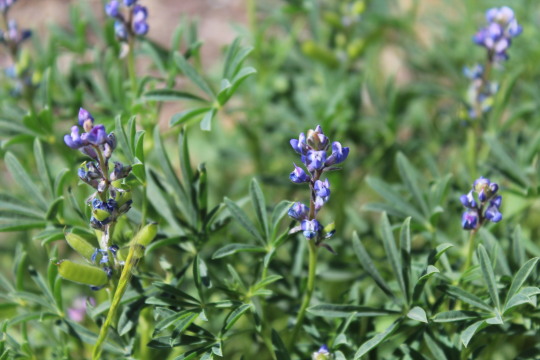
88 notes
·
View notes


